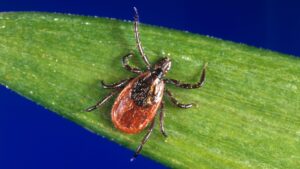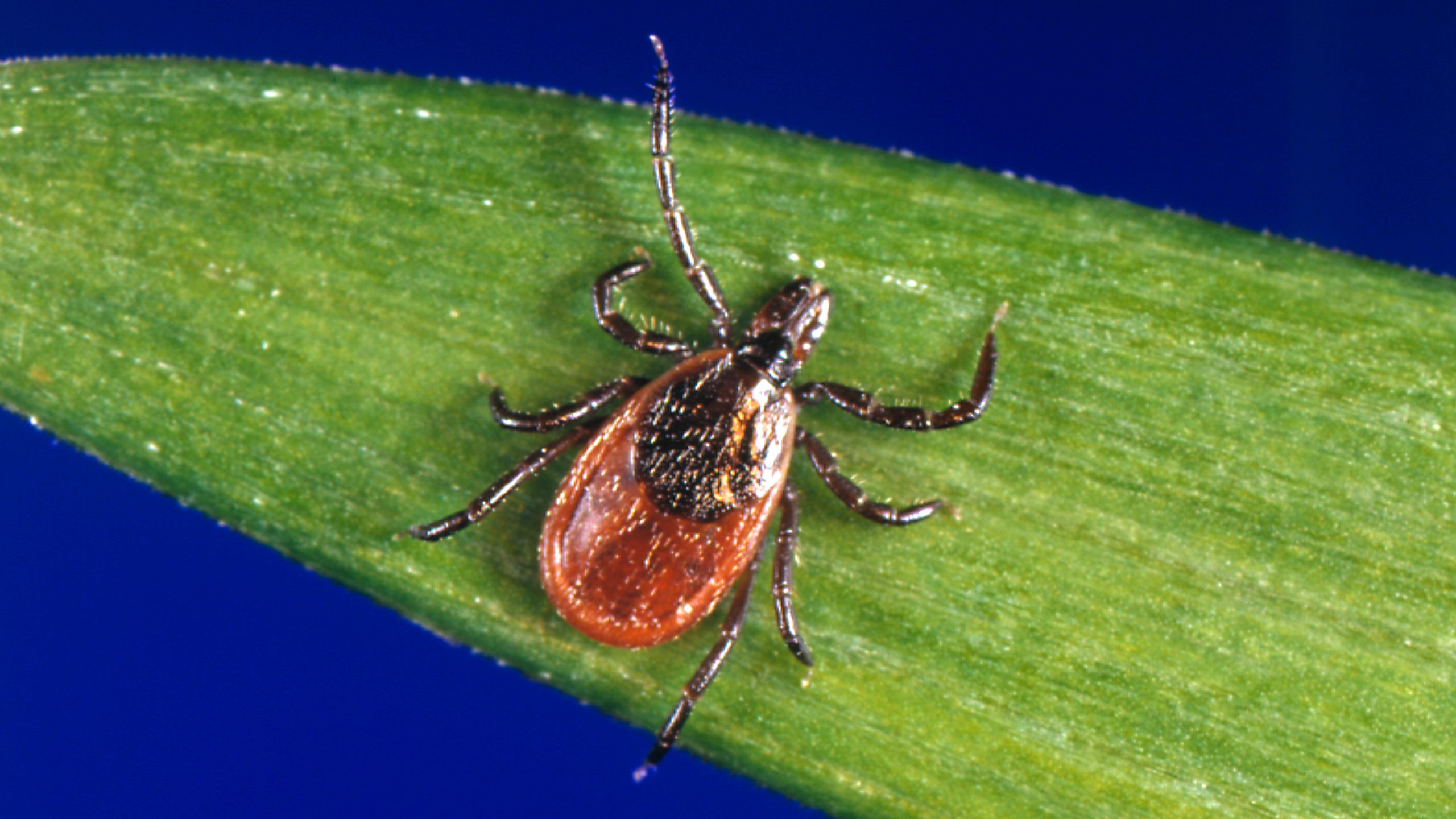With warmer weather arriving, bringing increased opportunities for outdoor activities, it’s crucial to remember the importance of protecting yourself from Lyme disease. May is recognized as Lyme Disease Prevention Month, serving as an annual reminder to take proactive steps against this tick-borne illness. Officials, including the Pennsylvania Department of Environmental Protection (DEP), are urging everyone to be vigilant as they venture outdoors during this season when ticks become more active.

Understanding Lyme Disease Transmission
Lyme disease is a bacterial infection caused by the bacterium Borrelia burgdorferi. It is primarily transmitted to humans through the bite of infected blacklegged ticks, also known as deer ticks. These ticks are typically very small, especially in their nymph stage, which is when they are most likely to transmit the bacteria. A tick must be attached for at least 36 to 48 hours to transmit Lyme disease, which is why finding and removing ticks promptly is a critical prevention step.
May: Focus on Prevention
The designation of May as Lyme Disease Prevention Month is strategically timed. The transition from cooler months to warmer spring and summer weather prompts both people and ticks to become more active outdoors. As people spend more time hiking, gardening, camping, or simply enjoying their backyards, their potential exposure to tick habitats increases. Therefore, May serves as a vital period for public health reminders about the risks of Lyme disease and the simple yet effective measures that can significantly reduce the chance of infection.
Where Ticks Hide
Knowing where ticks are commonly found can help you be more mindful in certain environments. Ticks that transmit Lyme disease typically live in wooded areas, tall grass, brushy areas, and leaf litter. They do not usually fly or jump but instead wait on vegetation for a host to pass by so they can attach themselves. While dense forests are prime habitats, ticks can also be found in bushy areas along hiking trails, in overgrown gardens, or even at the edge of lawns bordering wooded areas.
Essential Prevention Measures
Protecting yourself from tick bites involves a combination of straightforward strategies. The DEP and other health organizations recommend these key prevention steps:
- Use EPA-Registered Insect Repellents: Apply repellents containing DEET, picaridin, IR3535, oil of lemon eucalyptus (OLE), para-menthane-diol (PMD), or 2-undecanone. Always follow product instructions for proper application to exposed skin and/or clothing.
- Wear Protective Clothing: When in areas likely to harbor ticks (woods, tall grass), wear long sleeves, long pants tucked into socks, and closed-toe shoes. Light-colored clothing can also make it easier to spot ticks.
- Check for Ticks After Outdoor Activities: Perform a thorough tick check on yourself, children, and pets after spending time outdoors, even in your own yard. Ticks can be small and easily missed.
Recognizing Lyme Disease Symptoms
Early recognition of Lyme disease symptoms is vital for prompt treatment. Symptoms can vary from person to person and depend on the stage of the infection.
- Early Symptoms (Days to Weeks Post-Bite): The most characteristic early sign is the Erythema migrans (EM) rash, often described as a “bull’s-eye” pattern, though it can also appear as a uniform reddish patch. This rash is not painful or itchy and appears in about 70-80% of cases, but not always. Other early symptoms resemble the flu and may include fever, chills, headache, fatigue, muscle aches, and swollen lymph nodes.
- Later Symptoms (Weeks to Months Post-Bite): If untreated, the infection can spread. Later-stage symptoms can include severe joint pain and swelling (Lyme arthritis, often in the knees), neurological problems (e.g., facial palsy or drooping on one or both sides of the face, nerve pain, numbness, tingling, meningitis), and less commonly, cardiac issues (e.g., heart palpitations, dizziness due to changes in heartbeat).
Because Lyme disease symptoms can mimic other conditions and the rash is not always present, maintaining a high index of suspicion after potential tick exposure is important.
Performing Effective Tick Checks
Performing a thorough tick check is crucial because the longer a tick is attached, the higher the risk of disease transmission. After spending time outdoors, check your entire body carefully. Pay close attention to areas where ticks like to hide: in your hair and on your scalp, in and around the ears, inside your belly button, under your arms, around your waist, between your legs, and behind your knees. Remember to also check your clothing and any gear (like backpacks) that may have come into contact with vegetation. Showering after being outdoors can also help wash away unattached ticks.
Safe Tick Removal
If you find an attached tick, prompt and proper removal is essential. Use fine-tipped tweezers to grasp the tick as close to the skin’s surface as possible. Pull upward with steady, even pressure. Avoid twisting or jerking, as this can cause the mouthparts to break off and remain in the skin. Do not use methods like burning the tick or applying petroleum jelly, as these can cause the tick to potentially release more bacteria. After removing the tick, clean the bite area thoroughly with rubbing alcohol or soap and water.
Why Early Treatment is Key
Seeking immediate medical attention if you suspect Lyme disease or find an attached tick is paramount because early detection leads to more effective treatment. Lyme disease is a bacterial infection and is typically treated with antibiotics. When diagnosed and treated early, usually with a course of oral antibiotics, the infection is most likely to be cleared successfully, preventing the development of more severe, later-stage symptoms and potential long-term complications that can occur if the disease progresses untreated.
Protecting Your Pets
Our furry companions can also be susceptible to Lyme disease and can carry ticks into our homes. Regular tick checks on pets after they’ve been outdoors, especially in wooded or grassy areas, are important. Consult with your veterinarian about appropriate tick prevention products for your pet, such as collars, topical treatments, or oral medications, and discuss the possibility of vaccinating dogs against Lyme disease if you live in a high-risk area.
Geographic Prevalence
While ticks can be found in many areas, Lyme disease is most prevalent in certain regions of the United States. It is particularly common in the Northeast, Mid-Atlantic, and certain areas of the North Central states (like Wisconsin and Minnesota). The reminder from the Pennsylvania DEP is particularly relevant as Pennsylvania is known to be a state with a high incidence of Lyme disease cases. However, vigilance is important in any area where blacklegged ticks are present.
Stay Tick-Aware This Season
As warmer weather invites us outdoors, staying informed and prepared about Lyme disease is crucial. Understanding how the disease is transmitted through a tick bite, recognizing the potential symptoms, and knowing where ticks live are the first steps. Implementing simple prevention measures like using repellent, wearing protective clothing, and performing thorough tick checks after spending time outside can greatly reduce your risk. If you do find a tick or develop symptoms that could be Lyme disease, seek medical attention immediately.
By remaining tick-aware and taking these proactive steps, you can enjoy the outdoors while effectively protecting your health from Lyme disease this season.








